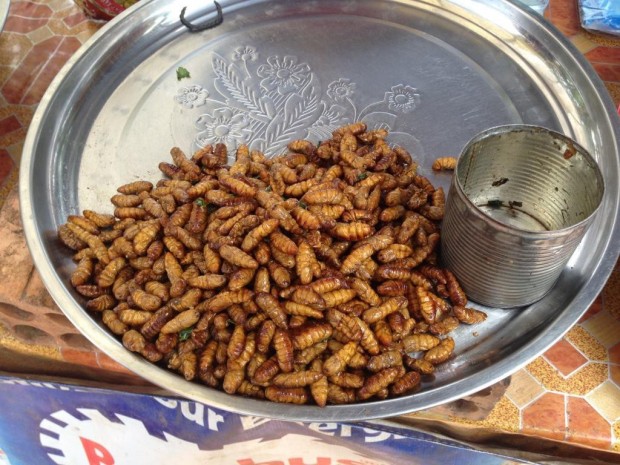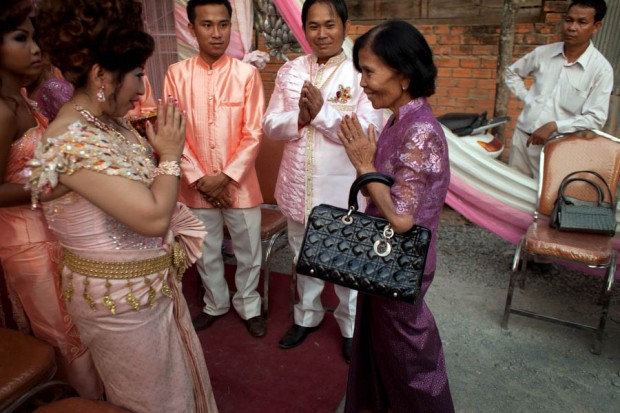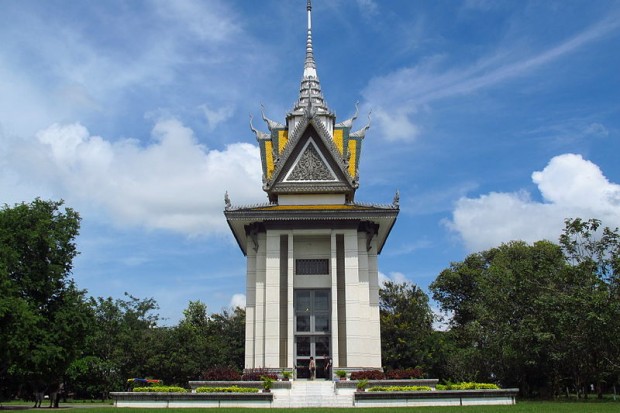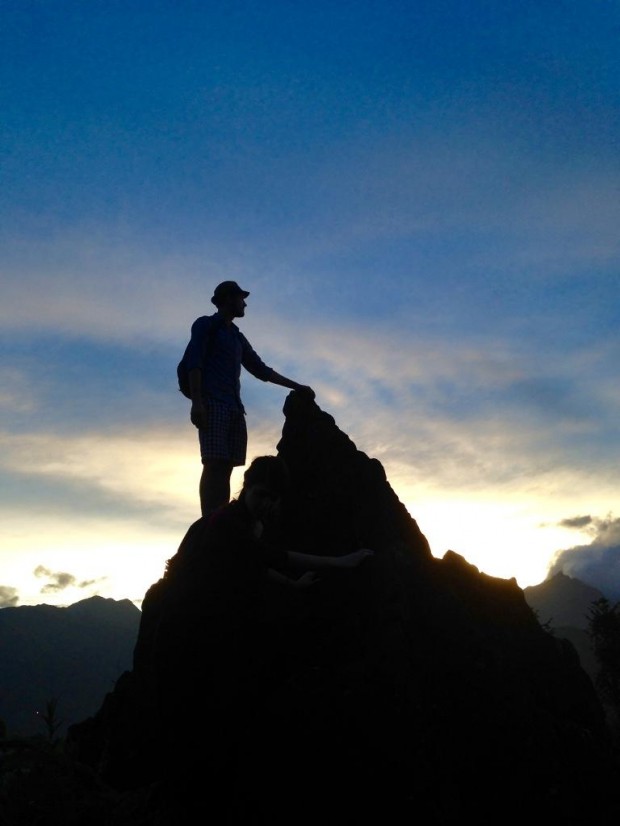We’ve all been there, thinking of that trip around Southeast Asia. Ten countries, so much to do, so little time! Should I scrimp and go backpacking or go all out? What’s the best route to take? Where should I stay? How long should I be at one place? The good thing is, it doesn’t matter. You’ll easily slip into your own momentum while you’re on that journey with your guidebook. In the mean time, here are some tips for travelling around Southeast Asia that will be useful to know before you get on the plane!
1. Learn to speak their language
This is one of the most important parts of travel, and also the first thing I try to do whenever I arrive in a new country (in any part of the world). English is spoken all over Southeast Asia, but if you really want the locals to understand what you’re saying (especially when you’re asking for something important), then you’d do well to learn at least a few basic words in their language. The locals will love that a foreigner is trying to integrate into their culture and at the same time helping them to get over their fear of speaking English “badly”.
2. Try all the local street food you can stomach
If you’re looking for a “Michelin Star” type guidebook to the food of Southeast Asia, look no further than the street vendors. This region is known for all the street food, surely you can’t pass this up – deep fried crickets and spiders in Cambodia, bamboo worms in Laos, and fried scorpion in Thailand…

Just kidding, that’s not ALL there is! Vietnam provides slightly healthier options with the country’s favourite dish – Phở – rice noodles served with fresh vegetables, lime, and an amazing beef or chicken broth. Nothing beats sitting on a mini stool by the roadside, with your knees almost up to your face, and enjoying a fresh, piping hot bowl of noodles while sweating like a pig in the humidity.
Then there’re always the usual street style stir-fried noodles, fried rice, or deep-fried prawn fritters and even fried ice cream! As with all street foods, anything deep-fried tends to be sinfully goooood. #YOLO.
3. Try all the different kinds of tropical fruits
Think you’ve tasted all the different kinds of fruits yet? Southeast Asia’s not only known for its street food, its selection of tropical fruits always seems to surprise tourists who come to visit! Almost everyone would’ve tasted mangoes, lychees, bananas, and papayas, but what about jackfruit, salak (snake fruit), longkong, custard apple, longans, chiku, star fruit, and the king of all fruits, the durian? Make sure to taste them while you’re here!
4. Stock up on Telfast and Imodium
While travelling, I always found that my appetite for food was strong, but my body’s adaptability to the environment did not necessarily match that. This might not be ideal for everyone but here’s my routine when arriving in a new place: Go straight to the street food, have a little bout of diarrhoea, pop the Imodium, sleep over it, and the next day, go about my day as usual (this time without the diarrhoea)! After having a couple of bad stomachaches, my body soon got immune to the street food I was always hunting down.
Also read: Your Ultimate Guide to Backpacking in Southeast Asia
As far as I know, I’m not allergic to anything, but sometimes I get a random rash on my skin or catch the common cold. Telfast to the rescue! For me, these two drugs were my absolute essentials in my medicine kit. For everything else, there’s always a pharmacy around wherever you go. And no, you DON’T have to bring six months’ worth of medicines or first-aid supplies.
5. Drink bottled water
This should be self-explanatory. Other than Singapore, it is not recommended to drink the tap water in the rest of Southeast Asia if you don’t have an electric kettle to boil it. It also pays to be careful when consuming drinks with unclean ice – let’s just say I learnt this the hard way.
6. Travel by bus
For many doing the Southeast Asia route, flying from one country to the other would help to save time, but if you want to leave less carbon footprints and see more of the country by land, then bus travel is one of the best ways to do that. It’s efficient, affordable, and you get to meet other locals and travellers while on that long bus ride.
Remember to keep a bottle of water handy and some snacks while on your journey. Sometimes you may be met with traffic, other times, a landslide. You just never know when that 10-hour bus journey will turn into an 18-hour one. Based on personal experience, the sleeper buses in Vietnam, Laos and Cambodia will require passengers to remove their shoes and put them into a plastic bag before getting to the designated sleeper bed – best to wear shoes that are easy to slip on and remove!
7. Keep your passport with you at all times
This point seems to be only too obvious for all travellers. In Vietnam, all hostels, hotels and guesthouses will require your passport upon check in, and they’ll keep your passports till you check out. Generally, this is safe. In fact, if you’re the forgetful type, it might be even better to leave your passport with the hotel until you check out.
I guess what I’m trying to say here is, if you’re entering Laos from Cambodia and travelling by bus, DO NOT give your passport to some guy who says he can settle your visa on arrival much quicker and all you have to pay him is X amount of money plus a stamp-in and stamp-out fee of $5. If you are ever met with the above-mentioned scenario, please, do not hand over your passport!
8. Keep a packet of wet wipes and a roll of toilet paper in your bag
Trust me on this, you’ll have the last laugh when you get to a toilet that doesn’t provide toilet paper and need to do a big one urgently. My many rolls of toilet paper have saved me from countless “episodes”. Tip – you don’t even have to buy the toilet roll, just grab one from your hostel, hotel room or guesthouse.
9. Accommodation
Hostels, guesthouses or hotels, there are plenty to choose from. I personally prefer hostels because I get to interact with other travellers who can give me personal recommendations on my next destination. If you’re travelling during the non-peak period and not on a tight schedule, you may not even need to make a booking in advance as well, which gives you more freedom in finding a place you prefer.
10. Check the climate before you go
Many people travel to Southeast Asia to sunbathe at gorgeous beaches while escaping the cold. If that’s on your list of things to do, you might like to check the climate before you go, lest you get stuck in stormy weather while on a diving trip in Cambodia (true story).
The monsoon season in Southeast Asia normally starts in May or June, reaching its peak between August and October, and then thinning off by November and December. In places like Singapore, Malaysia and Indonesia – countries closest to the equator – the climate remains wet and humid throughout the year, though more rainfall may be expected from October to December.
Also read: 9 Adrenaline Packed Adventures to Have in Southeast Asia
11. Get your mosquito repellant there
I brought two bottles of mosquito repellant from Singapore to last me the first two months and still got bitten more than I would’ve liked (generally I prefer not to get bitten, don’t we all?). I started buying mosquito repellants from the local stores wherever I went and that problem went away.
That’s when I realised that you have to buy the mosquito repellants from the country you’re visiting because those repellants are made for the “local” mosquitoes. Most of the sprays or creams contain DEET, but there are also some that do not. Choose the one more suitable for your skin. Having a little DEET in your skin is better than getting malaria or dengue!
12. Prepare to get ripped off
This is the standard for any developing country in Southeast Asia, and any traveller making their way here should know better than to accept the first price given to them. Learn to haggle because even if you manage to get a lower price than the first one, you’re still getting ripped off. A good gauge is to try to cut the first given price by half, and work your way from there.
The only time you get a fixed price is if the price tag is there. Avoid paying more than you really should by carrying lots of small change, and keep your money in separate wallets – the concept of personal space is lost here, many will try to see how much money you’re really carrying, and try to charge you more.
13. Respect the culture
 Image credit: Dennis Drenner
Image credit: Dennis Drenner
In Cambodia, the locals put their hands together to greet each other in a formal setting. Depending on how high you stand in the hierarchy, their hands also follow suit (e.g. greeting a peer = hands at chest level, greeting the teacher = hands at nose level, greeting a monk = hands above nose level). In most countries around the region, visitors must dress conservatively (shoulders, chest and knees must be covered) when visiting a temple or a mosque.
There are many different kinds of practices in each country and while you’re there, it’s always a good idea to try to learn these customs to show that you respect their culture. In turn, they’ll be more open to showing you their way of life.
14. Talk to the locals
The best way to learn about a country is through talking to the locals. Many a time, travellers (especially those living comfortably in hostels) tend to spend time with other travellers whom they meet on the road. This is not a bad thing, but you might miss out on true local culture if you don’t care to speak to the locals. Don’t worry about the language barrier, 90% of communication is non-verbal anyway. Who knows, you might get to hear a great war story or two…
15. Visit the museums and temples
 Image credit: Tim Gray
Image credit: Tim Gray
Temples are in abundance here; you’ll find many similarities among the different temples and may learn how connected we are even if you came from across the globe – and I think there is a certain comfort in that. Southeast Asia is also full of history and holds unbelievable war stories from as recent as 30 years ago. The best way to learn about them is to visit a museum or memorial site. Go back into the past, and put yourself into their shoes – feel the heartache of the country and its people. You’ll come out of it with a newfound sense of admiration for the ones who survived through the horrific times.
16. Learn how rice is grown and cooked

While you’re in Asia, you’re definitely going to consume lots of rice and start developing a “healthy” Asian body with all that carb. Rice is a staple food here and some countries even have major festivals to celebrate the rice harvest. We can tell the difference between well-cooked rice and one that is slightly under or over cooked. We can even tell the difference between rice from Thailand and rice from Indonesia (some of us can). That’s how obsessed we are with our rice. Learn the secret to cooking rice to perfection – ask a local to show you how.
Take a scenic cycle along the rice fields while the rice farmers are working, and when you’re done admiring the picturesque view, observe how they plant or harvest the rice. Never pass up the opportunity to help a local family harvest their rice; you’ll appreciate your next grain a little more.
17. Discover the art of using chopsticks
In several parts of Asia and Southeast Asia, chopsticks are used as the utensil of choice. Some places may not always offer you a fork and spoon; take this opportunity to learn the art of using chopsticks to pick up that noodle or grain of rice. You might find yourself eating slower than usual, but you’ll also get to savour the flavours a little more too!
18. Embrace nature in Southeast Asia

Mountains, rainforests, volcanoes, and spectacular islands – one does not have to go far to search for beauty here. Mother Nature is all around. Climb a mountain, camp in the jungle or stay in a tree house. Dive into the clear blue waters and admire marine life; see first hand how our actions and habits on land affect our fragile ecosystem – you might even stop eating shark’s fins soup after that. With so much going on in the world, and global warming slowly taking over the planet, who knows how long more we’ll be able to admire nature up close. Embrace it before it’s lost forever.
Also read: 17 Southeast Asia Trails on Every Hiker’s Bucket List
19. Take it slow
I have met many travellers who try to squeeze in as many activities and places to visit within a very short period. With all the travelling and constant checking in and out of hotels, they end up exhausting themselves and not enjoying as much as they could have. My advice is to take it slow. Things move at a different speed here. Attune yourself to the pace of the country or city you are visiting. To get an idea of how things move in some countries in Southeast Asia, here’s a quote from a Lonely Planet guidebook, “The Vietnamese plant the rice, the Cambodians watch it grow, and the Lao listen to it grow.”
20. Don’t overbook
Last but not least, get that visa renewed; you’ll want to stay longer.
And you won’t regret it.





